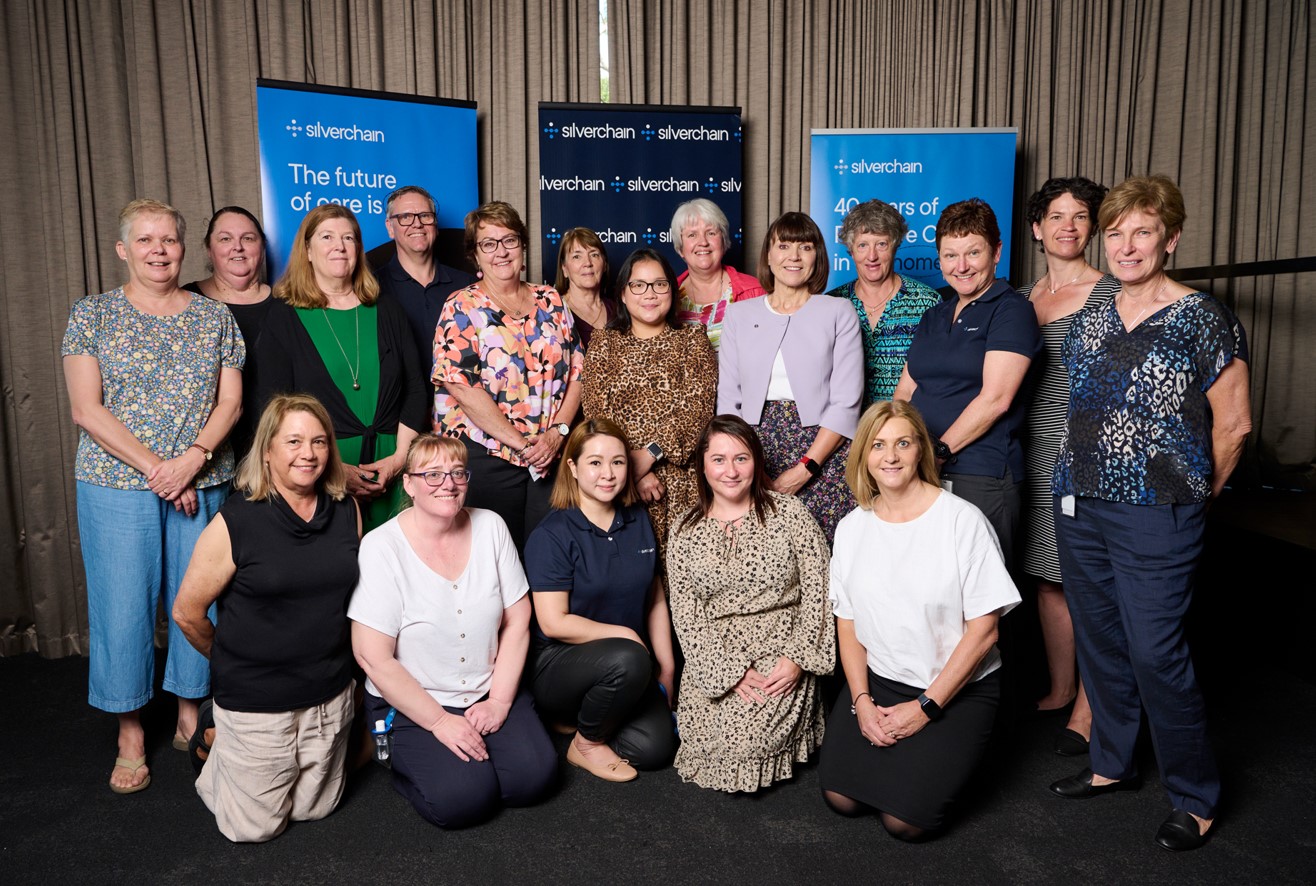“As a nurse working in the community, I think we’re lucky compared to people who work in a hospital because we see the person in their home, in their environment, with their pets and their garden.” – Dianne Boekhout, Registered Nurse, Western Australian palliative care team.

Palliative care
For more than four decades, Silverchain has delivered compassionate and comprehensive palliative care to Australians to help them die in their own homes. Today, we offer in-home palliative care services in Western Australia, South Australia, New South Wales and Queensland.
Our specialist palliative care teams care for thousands of people each year of all ages, offering people the dignity to die in their place of choosing – at home – surrounded by their loved ones and in a familiar environment.
Our interdisciplinary teams include nurses, doctors, social workers, care aides, spiritual care worker and volunteers. The service is flexible and suitably tailored for everyone. In addition to seven days per week service for clients, some family members can also access respite care and we continue to offer bereavement support to the families and loved ones after the client has passed away.
In 2022-23, we celebrated 40 years of providing palliative care to the Western Australian community. We now provide end of life care to more than 3,500 people in WA each year.
The evolution of our service over this period has meant different things across our palliative care teams, with some noticing the benefits of technology and medicine advancements, while others have seen how the development of new models of care have helped improve our clients and their carers’ experiences. For many, it’s been about the beneficial societal and cultural changes towards ‘a good death’ and how that has positively impacted the families and loved ones.
Continual improvement of clinical standards
In 2022-23, we renewed our escalation processes to assist our clinicians and care teams to recognise subtle signs of deterioration in clients. Sepsis Australia data shows that more than 55,000 Australians are diagnosed with sepsis each year – with more than 80 per cent of cases beginning in the community.
As a community and home care provider, we are often in the privileged position to be the main point of connection a client has with the community. We know our clients and are well positioned to notice if they appear confused or are acting differently as a sign of early deterioration that may lead to sepsis.
While our role is not to clinically manage sepsis, we have made these improvements to help our teams identify it and escalate it to ensure our clients receive timely tertiary care. We have improved our escalation procedures and updated our educational videos for our teams.
These changes also complement the national Sepsis Clinical Care Standard that the Australian Commission on Safety and Quality in Health Care (ACSQHC) introduced in 2022.
Continue reading
View our achievements in Future Care for 2022-2023.
View our achievements in Agility for 2022-2023.
View our achievements in Partnerships for 2022-2023.
View our achievements in People for 2022-2023.
View our achievements in Prosperity for 2022-2023.
